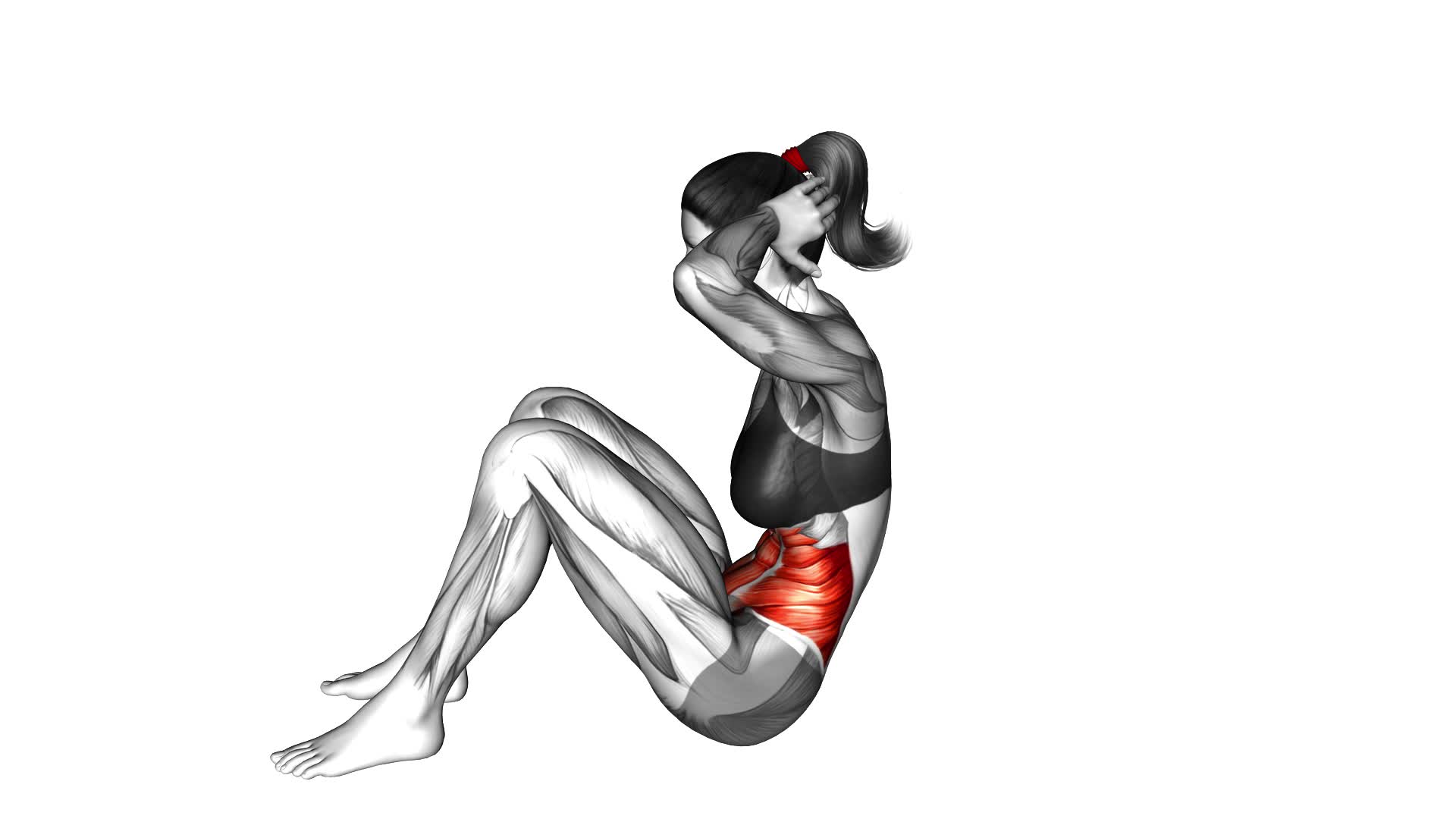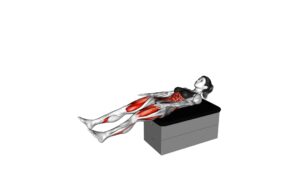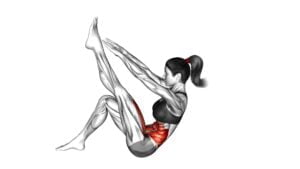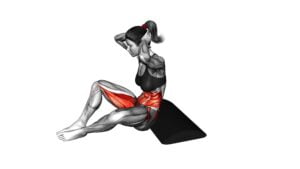3-4 Sit-up (female) – Video Exercise Guide & Tips

Looking to strengthen your core and improve your fitness level?
Watch This Exercise Video
The 3-4 sit-up is a fantastic exercise for women that targets your abdominal muscles and helps you achieve a toned midsection.
In this video exercise guide, we'll show you the proper form and technique for performing the 3-4 sit-up, as well as variations and modifications to suit your fitness level.
Maximize your results and avoid common mistakes with our helpful tips.
Get ready to feel the burn and see the results!
Key Takeaways
- The 3-4 Sit-up targets abdominal muscles, helping to achieve a toned midsection.
- Proper form and technique, such as keeping feet flat on the ground and engaging core muscles, are important to prevent injuries and maximize results.
- There are variations and modifications of the 3-4 Sit-up, such as the decline sit-up and weighted sit-up, to increase intensity and challenge core muscles.
- Tips for maximizing results include incorporating weights, using proper breathing techniques, and gradually increasing the weight or intensity over time.
Benefits of the 3-4 Sit-up
Get stronger abs with the 3-4 Sit-up. Incorporating sit-ups into your daily routine offers numerous benefits for your abdominal muscles. Sit-ups are an effective exercise to target your abs and help you achieve a stronger core. By performing sit-ups, you engage your rectus abdominis, obliques, and transverse abdominis, leading to improved muscle definition and overall strength in your midsection.
One of the main benefits of incorporating sit-ups into your routine is that they help to strengthen your core muscles. When your core is strong, it provides stability for your entire body, improving your balance and posture. Additionally, strong abdominal muscles can help alleviate back pain and reduce the risk of injury during physical activities.
Sit-ups also provide a great way to tone and sculpt your abs. By consistently performing sit-ups, you can target and define your abdominal muscles, resulting in a more chiseled and toned appearance. This can boost your confidence and enhance your overall physique.
To effectively target your abdominal muscles with sit-ups, it's important to maintain proper form. Start by lying on your back with your knees bent and feet flat on the floor. Place your hands behind your head or crossed over your chest. Engage your core and lift your upper body off the ground, bringing your chest towards your knees. Control the movement on the way down and repeat for the desired number of repetitions.
Incorporating sit-ups into your daily routine can provide significant benefits for your abdominal muscles. By consistently performing sit-ups with proper form, you can strengthen and tone your abs, leading to improved core strength and a more defined physique.
Proper Form and Technique
To maintain proper form and technique during sit-ups, follow these guidelines to maximize the effectiveness of the exercise.
- One common misconception about sit-ups is that it's necessary to anchor your feet under something. In reality, this can put unnecessary strain on your hip flexors and limit your range of motion. Instead, keep your feet flat on the ground, hip-width apart, with your knees bent at a 90-degree angle.
- Another misconception is that you need to come all the way up to a sitting position. However, this can strain your neck and lower back. Instead, focus on engaging your core muscles and lifting your shoulder blades off the ground while keeping your lower back pressed into the floor.
- Common injuries that can occur during sit-ups include strains in the neck, lower back, and hip flexors. To avoid these injuries, it's important to start with proper form, listen to your body, and stop if you feel any pain or discomfort. Remember, quality over quantity is key.
Now, let's explore some variations and modifications to make sit-ups more challenging or suitable for different fitness levels.
Variations and Modifications
To add variety and adapt the sit-up exercise to different fitness levels, you can explore several variations and modifications. Sit up progressions can help you gradually increase the difficulty of the exercise as you become stronger and more experienced.
One example is the decline sit-up, where you perform the sit-up with your upper body positioned lower than your lower body. This variation increases the intensity of the exercise by adding resistance to your abdominal muscles.
Another progression is the weighted sit-up, where you hold a weight plate or dumbbell against your chest or behind your head while performing the sit-up. This adds extra resistance and challenges your core muscles even more.
If you're looking for sit up alternatives, there are a few options you can try. The crunch is a popular alternative that focuses on the upper portion of the abdominal muscles. Instead of lifting your entire upper body off the ground, you only lift your shoulder blades. This can be a good option if you have any lower back issues or find the traditional sit-up uncomfortable.
Another alternative is the Russian twist, which targets the obliques and improves rotational strength. To perform this exercise, sit on the ground with your knees bent and feet flat. Lean back slightly and twist your torso from side to side, touching the ground with your hands on each side. This exercise engages your core muscles in a different way, providing a challenging variation to the sit-up.
Tips for Maximizing Results
To further enhance your sit-up workout and achieve optimal results, incorporate these key tips into your routine.
Proper breathing techniques play a vital role in maximizing the effectiveness of your sit-ups. As you lift your upper body off the ground, exhale forcefully through your mouth, contracting your abdominal muscles. Inhale deeply through your nose as you lower your body back down. This controlled breathing pattern helps engage your core muscles and provides better stability during the exercise.
Another way to maximize your sit-up results is by incorporating weights. Adding resistance to your sit-up routine challenges your muscles even more, leading to increased strength and definition. You can hold a dumbbell or a weight plate against your chest while performing the sit-ups. Start with a weight that's comfortable for you and gradually increase it as you get stronger.
Common Mistakes to Avoid
Avoiding common mistakes is crucial for maximizing the effectiveness of your sit-up routine. By ensuring you're performing the exercise with proper technique, you can avoid potential injuries and achieve better results.
Here are some common mistakes to watch out for:
- Rounding your back: One of the most common mistakes is rounding your back during the sit-up. This not only puts unnecessary strain on your spine but also reduces the effectiveness of the exercise. Keep your back straight throughout the movement.
- Using momentum: Another mistake is using momentum to complete the sit-up instead of relying on your core muscles. Swinging your arms or using your legs to generate momentum takes away the focus from your abs. Engage your core and perform the movement slowly and controlled.
- Placing your hands behind your head: While it may seem like a natural position, placing your hands behind your head can lead to neck strain. Instead, cross your arms over your chest or place your fingertips behind your ears to support your head without pulling on your neck.
Frequently Asked Questions
How Many Calories Can You Burn by Doing Sit-Ups?
Sit-ups are a great exercise for burning calories and toning your core. By engaging your abdominal muscles, you can burn a significant amount of calories. The exact number of calories burned depends on various factors such as your weight, intensity, and duration of the exercise. However, on average, you can expect to burn around 100-200 calories by doing sit-ups for 30 minutes.
In addition to calorie burn, sit-ups also offer benefits like improved core strength and stability.
Can Sit-Ups Help With Reducing Belly Fat?
Sit-ups can be effective in targeting belly fat and helping to reduce it. They engage the abdominal muscles and can contribute to strengthening and toning the area. However, it's important to note that spot reduction isn't possible, and overall body fat loss is necessary to see results.
Along with exercise, maintaining a healthy diet that's low in calories and high in nutrients is crucial for reducing belly fat.
How Often Should You Do Sit-Ups to See Results?
To see results from sit-ups, you need to do them regularly. Aim to incorporate sit-ups into your workout routine three to five times a week.
Remember to vary the sit-up variations to target different muscles and prevent boredom.
It's crucial to maintain proper form throughout the exercise to avoid injury and maximize its effectiveness.
Are Sit-Ups Suitable for Beginners?
Sit-ups are a great exercise for building core strength and toning your abs. They can be suitable for beginners, but it's important to start with modifications if needed. If regular sit-ups feel too challenging, you can try bent-knee sit-ups or use an exercise ball for support.
Alternatives to sit-ups include planks, Russian twists, and bicycle crunches. Remember to listen to your body and start slow to avoid injury.
Can Sit-Ups Lead to Back Pain or Injury?
Sit-ups can potentially lead to back pain or injury if not done correctly. The causes of back pain from sit-ups include improper form, straining the neck, and overuse of the lower back muscles.
It's important to engage your core and use proper technique to avoid injury. If you're concerned about back pain, there are alternative exercises for core strength that can be more back-friendly, such as planks, bridges, or Russian twists.
Conclusion
In conclusion, the 3-4 sit-up is a beneficial exercise for females looking to strengthen their core muscles. By following proper form and technique, variations and modifications can be incorporated to target different areas of the abs.
Maximizing results can be achieved by staying consistent and gradually increasing intensity. It's important to avoid common mistakes to ensure safety and effectiveness.
Incorporating the 3-4 sit-up into a regular workout routine can contribute to overall fitness and strength.

Author
Years ago, the spark of my life’s passion ignited in my mind the moment I stepped into the local gym for the first time. The inaugural bead of perspiration, the initial endeavor, the very first surge of endorphins, and a sense of pride that washed over me post-workout marked the beginning of my deep-seated interest in strength sports, fitness, and sports nutrition. This very curiosity blossomed rapidly into a profound fascination, propelling me to earn a Master’s degree in Physical Education from the Academy of Physical Education in Krakow, followed by a Sports Manager diploma from the Jagiellonian University. My journey of growth led me to gain more specialized qualifications, such as being a certified personal trainer with a focus on sports dietetics, a lifeguard, and an instructor for wellness and corrective gymnastics. Theoretical knowledge paired seamlessly with practical experience, reinforcing my belief that the transformation of individuals under my guidance was also a reflection of my personal growth. This belief holds true even today. Each day, I strive to push the boundaries and explore new realms. These realms gently elevate me to greater heights. The unique combination of passion for my field and the continuous quest for growth fuels my drive to break new ground.







